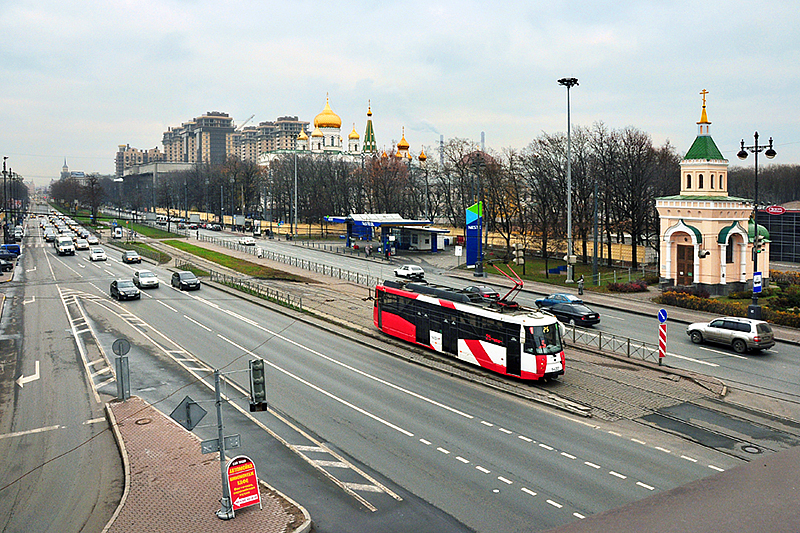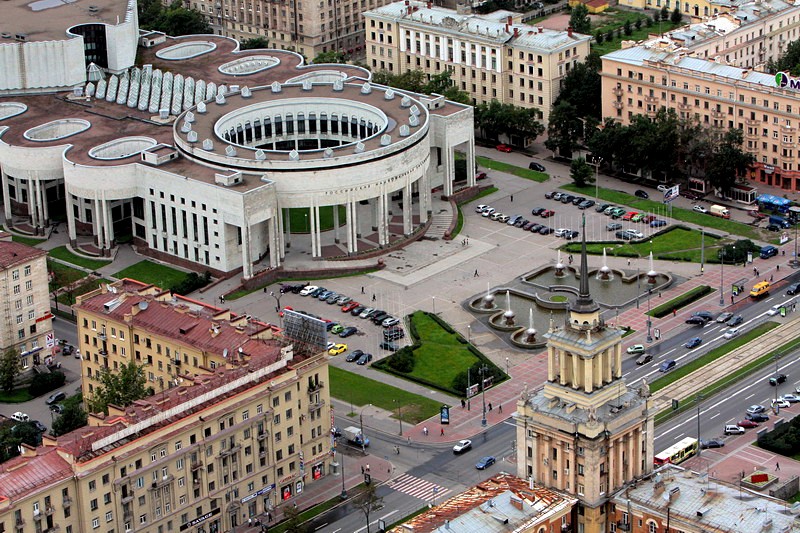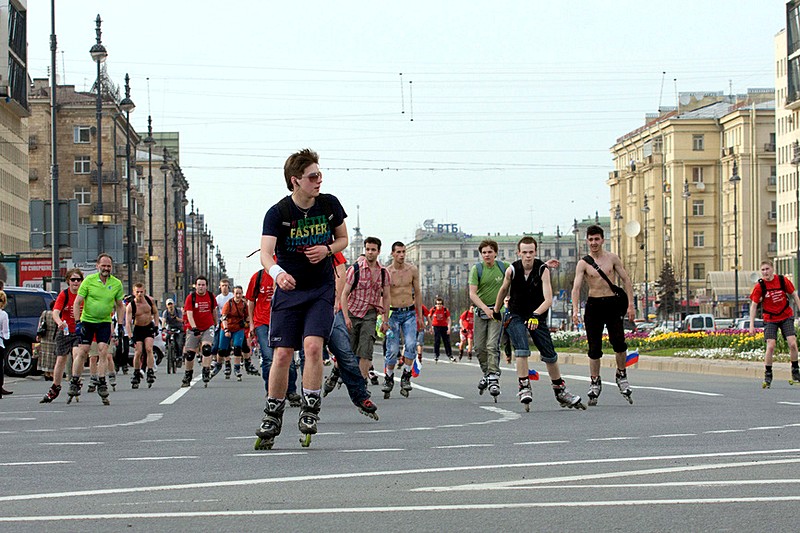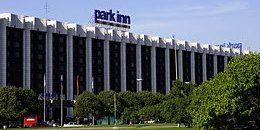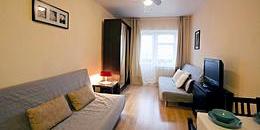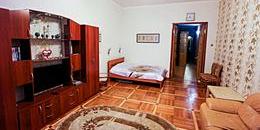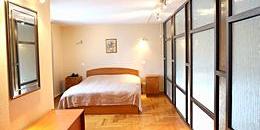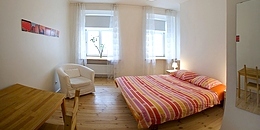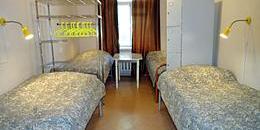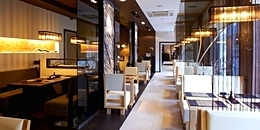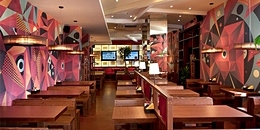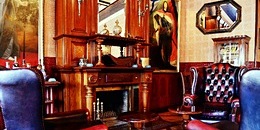Moskovsky Prospekt
Moskovsky Prsopekt is a 10km thouroughfare leading from the centre of St. Petersburg due south in the direction of Moscow. The avenue appeared at the same time as Nevsky Prospekt, at the beginning of the 18th century. At first the road was built for use by members of the Tsar's family and the high nobility, and access was barred to commoners. For this reason it was originally called Tsarskoselsky Tract, and later Tsarskoselsky Prospekt, from the name of the imperial residence at Tsarskoye Selo. The avenue runs south from Sennaya Ploshchad, which for two centuries was the main market square in the city, in its own way the belly of St. Petersburg.
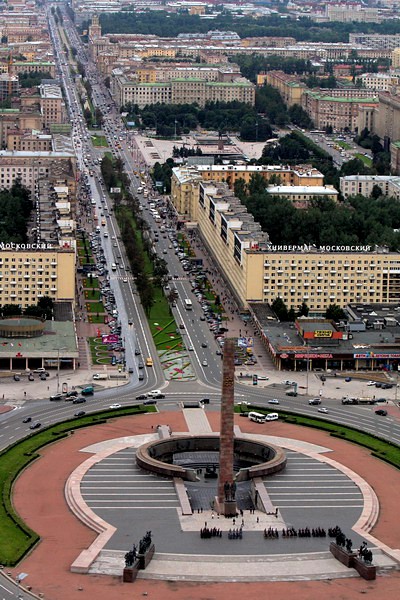
Real development of Moskovsky Prospekt began in the 19th century. Between 1836 and 1838, the Moskovsky Triumphal Gates were raised at the city limits, to designs by Vasiliy Stasov. At the time they were the largest cast-iron structure in the world. 1845 saw the founding on the avenue of the Voskresensky Novodevichy Convent, the cemetery of which became the final resting place for many prominent citizens. A large part of Tsarskoselsky Prospekt came to be known among students as the Latin Quarter (in imitation of Paris) as over time the Railway Institute, the Technological Institute and several military academies were established in the area.
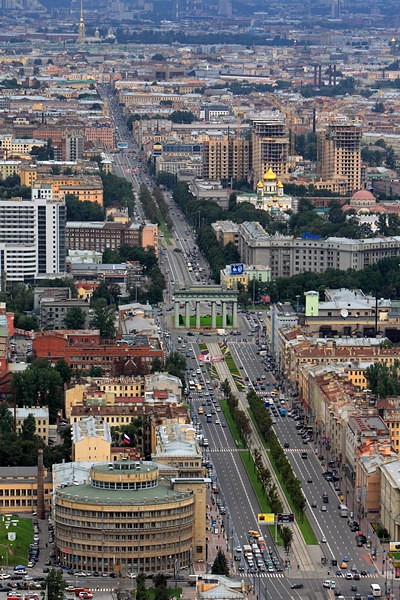
The 20th century breathed new life into Moskovsky Prospekt. Under Stalin, there were plans to make it Leningrad's main thoroughfare, and Moskovskaya Ploshchad the centre of the city. On this basis, the avenue quickly saw the arrival of several major new buildings in Stalinist neoclassical style, the most impressive of which are the House of Soviets and the so-called "General's House" on the corner of Basseynaya Ulitsa, with its distinctive high tower. After the war, in 1945, the picturesque Victory Park ("Park Pobedy") was laid out around a series of ponds to commemorate victory over Nazi Germany. Finally, in 1975, the massive Monument to the Heroic Defenders of Leningrad was erected on Ploshchad Pobedy at the southern end of the avenue.
A separate word needs to be said about the numerous name changes and divisions that the avenue has undergone. Between 1776 and 1878, the section from Sennaya Ploshchad to the Fontanka River was called Obukhoskaya Ulitsa, and the rest Moskovskoye Shosse ("Moscow Highway"). In 1878, to celebrate the successes of the Russo-Turkish War in the Balkans, the whole avenue was renamed Zabalkansky Prospekt. After the October Revolution, it became first Mezhdunarodny Prospekt ("International Avenue") and then, for a few years in the mid-20th century, it was named after Stalin. Then at last it was given its current name - Moskovsky Prospekt. Today, Moskovsky Prospekt continues to be one of the city's main thoroughfares, and its many landmarks are likely to become familiar to tourists as they journey between the city and Pulkovo Airport, as well as following the Tsars' road to see the famous palaces and parks at Tsarskoe Selo.
| Metro stations: | Sennaya Ploshchad / Sadovaya / Spasskaya, Tekhnologicheskiy Institut, Frunzenskaya, Moskovskiye Vorota, Elektrosila, Park Pobedy, Moskovskaya |
|---|---|
| Best walking route: | 1. From Moskovskaya Metro Station to Park Pobedy (1.7km). 2. From Moskovskiye Vorota Metro Station to Novodevichy Convent (650m) |
| What's here? | Moscow Triumphal Gates, Voskresensky Novodevichy Monastery, Moskovskaya Ploshchad, House of Soviets, General's House, Victory Park, Monument to the Heroic Defenders of Leningrad |
| What's nearby? | Fontanka River, Obvodny Canal, Sennaya Ploshchad |

